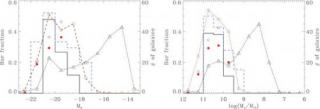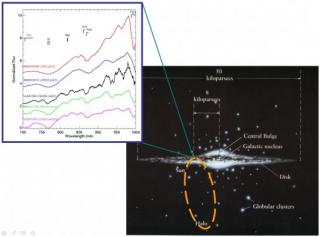
In this work we present a recent study of the bar fraction in the ComaCluster galaxies based on a sample of ~190 galaxies selected from theSloan Digital Sky Survey Data Release 6 and observed with the Hubble Space Telescope (HST) Advanced Camera for Survey (ACS).The unprecedented resolution of the HST-ACS images allows us to explore the presence of bars, detected by visual classification, throughout luminosity range of 9 mag (-23 < Mr < -14), permitting us to study th poor known region of dwarf galaxies. We find that bars are hosted bygalaxies in a tight range of both luminosities
Advertised on

